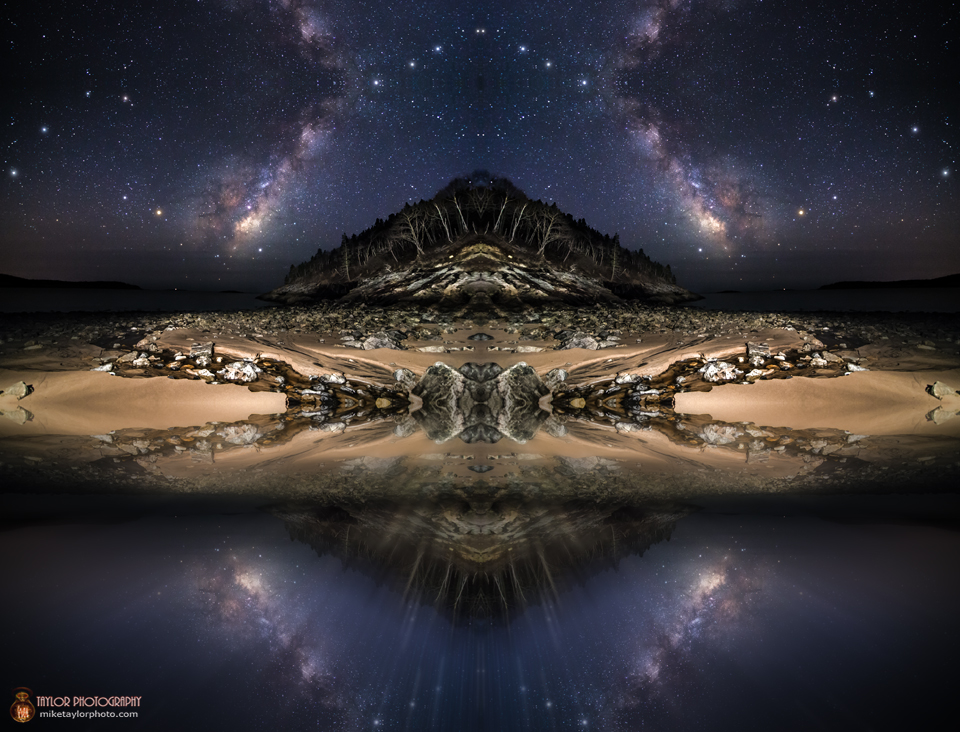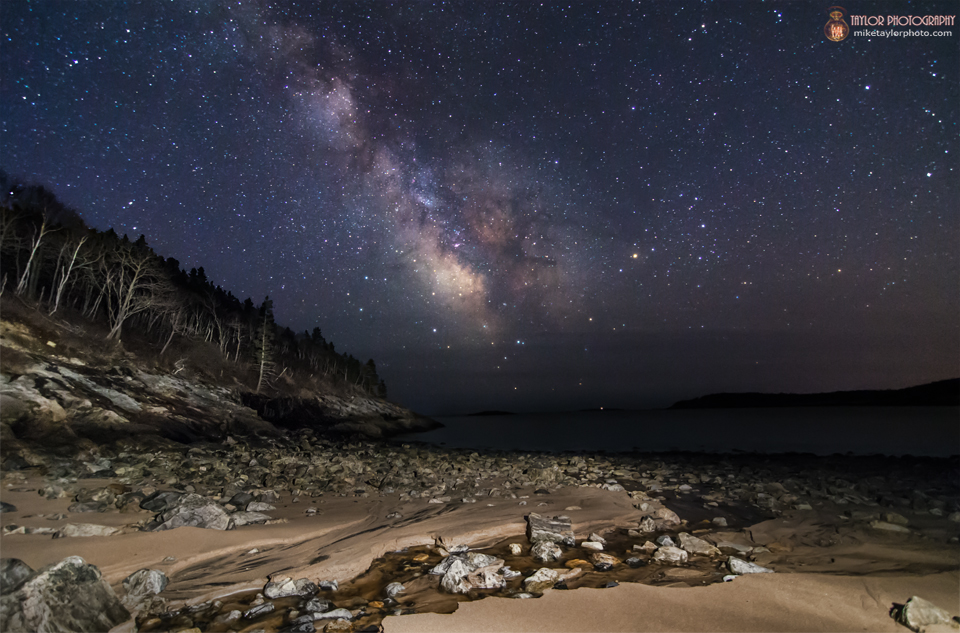
Milky Way Multiplicity (Op-Ed)
Mike Taylor has been a landscape and studio photographer for 20 years combined and counting. Taylor contributed this article to SPACE.com's Expert Voices: Op-Ed & Insights.

Observing and photographing the features of the night sky is an awe-inspiring experience that so few people ever get to enjoy. The atmosphere of the night, the sights and sounds, are so very contrary from normal daytime hours that it is literally a different world — a radical world of diffused light, excessive shadows and noises that you will simply never see or hear when the sun is up. These existential awakenings always spark my inner child to marvel at the world again.
Living in Maine offers me some great opportunities to capture the beauty of our night sky with very little light pollution. Acadia National Park is one of my favorite spots for night photography, where the sky is dark, open and full of wonder. Our Milky Way galaxy is easily seen with the naked eye here, as depicted in this long exposure photograph.

This image was taken at Sand Beach, one of the most popular scenic spots in Acadia. On the East side of the beach there is a small tributary that flows down into the Atlantic Ocean. It is a fantastic area to listen to the loud crash of the waves on the shore and the soft, intimate sounds of a babbling brook at the same time. On Earth Day morning in April 2013, I spent quite a few hours photographing the night sky at this awe-inspiring locale, using a flashlight to illuminate the foreground sand and rocks.
I have dubbed the top image Milky Way Multiplicity because I took the original Earth Day image and mirrored it 4.25 times upon itself to create this kaleidoscope-like effect. I also added some blur effects to the bottom half of the image to add to the ominous tone and make it appear as if it is a reflection in a body of water.
As most professional photographers do, I shoot in RAW and then process my images through Adobe Lightroom and Adobe Photoshop with an artist's eye. I use these tools in my digital darkroom to create both realistic and surreal works of art. Sometimes I process my photos to show the natural scene of what my eyes witnessed and sometimes I take a more dramatic approach by adding certain effects and tweaks.

With that being said, here are two of my favorite quotes from the photography master Ansel Adams, who spent a lot of time editing his images and who would definitely be using the tools in the digital darkroom if he were alive today:
"You don't take a photograph, you make it."
"Photography is more than a medium for factual communication of ideas. It is a creative art."
Get the Space.com Newsletter
Breaking space news, the latest updates on rocket launches, skywatching events and more!
Note for photographers:
EXIF data:
Nikon D7000 & Tokina 11-16 wide angle @ 11mm
f/2.8 - 20 sec - ISO 3200
04/22/13 - 4:00 AM
Processed through Lightroom 5 & Photoshop CS5
The views expressed are those of the author and do not necessarily reflect the views of the publisher. Follow Taylor on https://www.facebook.com/miketaylorphoto, http://gplus.to/miketaylorphoto, http://pinterest.com/taylorphoto1, http://miketaylorphoto.com and through his workshops at http://miketaylorphoto.smugmug.com/Workshops. This version of the article was originally published on SPACE.com.
Join our Space Forums to keep talking space on the latest missions, night sky and more! And if you have a news tip, correction or comment, let us know at: community@space.com.









